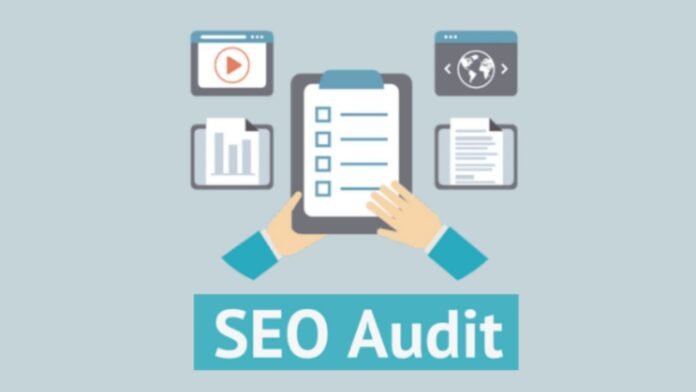1st Steps for SEO Site Audit, Conducting a thorough SEO site audit in Internet marketing is essential for optimizing online visibility. One critical aspect of this process is identifying indexing problems in Google. This introductory guide explores the first steps towards uncovering and addressing these issues for enhanced search engine performance.
Follow these steps to boost your Google ranking.

Enhance your Google ranking with these strategic steps. Optimize website content with relevant keywords and engaging, informative material. Increase site speed and ensure mobile-friendliness for a seamless user experience. Cultivate backlinks from reputable sources to establish credibility.
Regularly update content to reflect current trends and maintain relevance. Utilize meta tags and descriptions effectively for improved visibility in search results. Embrace social media platforms to expand online presence and drive traffic. Consistently monitor and analyze performance metrics to fine-tune strategies and stay ahead of the competition. Elevate your online presence and attract more visitors with these essential tactics.
Know whether your site is being indexed or not.
Monitoring the indexing status of your website is crucial for online visibility. By employing tools like Google Search Console, you can determine if your site is being indexed effectively by search engines.
Regularly checking indexing status ensures your content is discoverable, enabling strategic adjustments for improved search engine optimization (SEO). This practice aids in maintaining a strong online presence, driving organic traffic, and enhancing overall website performance. Stay informed about your site’s indexing status to optimize its visibility and reach in the vast landscape of the internet.
What if your site needs to be indexed?
If your website isn’t being indexed, it’s akin to having a store with its doors locked. Without indexing, search engines like Google can’t find or display your site in search results. This means potential visitors won’t stumble upon your content, severely limiting your online visibility and traffic.
Causes could range from technical issues like robots.txt blocking to low-quality content or penalties from search engines. Prompt action, such as fixing technical errors, improving content quality, and submitting your site to search engines, ensures indexing and enhances your online presence.
Robots.txt
Robots.txt is a text file websites use to communicate with web crawlers and search engine bots. It specifies which parts of the site should be crawled and indexed and which should be ignored. This simple yet powerful tool helps website owners control how their content is accessed and displayed in search engine results.
By defining directives like “allow” or “disallow” for specific user agents, robots.txt enables efficient management of web traffic and ensures the visibility of essential content while protecting sensitive information from being indexed. It’s a crucial component of website administration and search engine optimization strategies.
Robots meta tag
The Robots meta tag is a crucial element of HTML used to instruct search engine crawlers on indexing and displaying a webpage’s content. It allows web admins to control which pages search engines can access and index, influencing a site’s visibility in search results.
By including directives like “index,” “index,” “follow,” or “nofollow,” webmasters can manage whether search engines should index the page content and follow its links. This tag plays a significant role in SEO strategies, ensuring that only relevant and valuable content is displayed to users while keeping sensitive or duplicate content hidden from search engines.
XML Sitemaps
XML Sitemaps are files that list all the important pages of a website, helping search engines like Google crawl and index content more effectively. These structured documents, written in XML format, provide details such as the URLs of pages, their last modification date, and the frequency of changes.
XML Sitemaps enhance website visibility by ensuring search engines don’t miss any crucial pages, improving the site’s ranking and overall SEO performance. By systematically organizing website content, XML Sitemaps facilitate smoother navigation for search engine bots and users, enhancing the overall browsing experience.
Javascript

JavaScript, the backbone of web development, empowers interactivity on the internet. As a versatile scripting language, it enhances user experience through dynamic content and responsive design. JavaScript seamlessly integrates with HTML and CSS, enabling developers to create dynamic web pages, interactive forms, and engaging user interfaces.
-Its flexibility extends to client- and server-side applications, fostering cross-platform compatibility and rapid development. With a vast ecosystem of libraries and frameworks like React and Angular, JavaScript continues to evolve, driving innovation in web development and powering the modern digital landscape.
Some Points Of 1st Steps for SEO Site Audit
SEO Audit Checklist: This is a comprehensive list of tasks and considerations for evaluating the health and effectiveness of a website’s search engine optimization strategy. It covers various aspects such as on-page optimization, technical SEO, content quality, backlink profiles, and more.
Free SEO Audit: This is a service or tool that assesses a website’s SEO performance without charge. It provides insights into areas for improvement and helps website owners identify optimization opportunities.
SEO Audit Tool: Software designed to analyze a website’s SEO health, identify issues, and provide recommendations for improvement. These tools automate the audit process, saving time and offering valuable insights into areas of optimization.
Free SEO Audit Report PDF: This thorough report, which is produced by an SEO audit tool or service, offers a detailed evaluation of the SEO performance of a website. It typically includes findings, recommendations, and actionable insights in a downloadable PDF format.
SEO Audit Template: A predefined framework or format used to conduct SEO audits systematically. It serves as a guide for organizing audit tasks, documenting findings, and outlining optimization strategies.
Website Audit Checklist: This is a list of items to review when assessing a website’s overall health and performance. It covers various aspects such as design, usability, security, performance, and SEO.
SEO Audit Example: A real-world demonstration or case study illustrating the process and results of an SEO audit. Examples often showcase before-and-after scenarios, highlighting improvements in search visibility and website performance.
What is an SEO Audit? Examine a website’s SEO factors and performance to identify strengths, weaknesses, and opportunities for improvement. It involves assessing on-page and off-page elements, technical aspects, content quality, and overall site structure to optimize for better search engine rankings and user experience.
Conclusion
Initiating the first steps for an SEO site audit is paramount for optimizing online visibility and search engine performance. By carefully assessing indexing issues, technical SEO elements, and content relevance, website owners can lay a solid foundation for further optimization efforts. Investing time and resources into this initial audit phase sets the stage for long-term success in the competitive digital landscape.
FAQ
How to Do an SEO Website Audit Step-by-Step?
An SEO website audit systematically assesses various aspects of a site’s optimization. Steps include:
- Analyzing keywords.
- Evaluating content quality.
- Checking technical SEO elements.
- Assessing backlink profiles.
- Identifying opportunities for improvement.
How Do You Audit a Website to Identify SEO Problems?
To audit a website for SEO problems:
- Start by examining on-page elements like meta tags, content quality, and keyword usage.
- Assess technical aspects such as site speed, mobile-friendliness, and URL structure.
- Review off-page factors like backlinks and domain authority.
What Would Be Your First Step When Completing a Competitive SEO Audit for a Client’s Website?
The initial step in a competitive SEO audit is analyzing the client’s website against competitors. Assess their keyword rankings, backlink profiles, content strategies, and overall online presence. This comparison helps identify strengths, weaknesses, and opportunities for improvement.
What Are The Steps In SEO Auditing Towards Optimizing The Performance Of Search Engines?
1st Steps for SEO Site Audit, SEO auditing involves several steps to enhance search engine performance. These include analyzing website structure, assessing keyword usage and relevance, evaluating content quality, optimizing technical aspects, and improving off-page factors like backlinks and social signals.
What Are The 4 Important Stages In SEO?
The four important stages in SEO are:
- Keyword Research & Analysis
- On-Page Optimization
- Off-Page Optimization Continuous Monitoring & Adaptation.
- These stages involve identifying relevant keywords, optimizing website elements, building quality backlinks, and ongoing analysis to maintain and improve search rankings.


